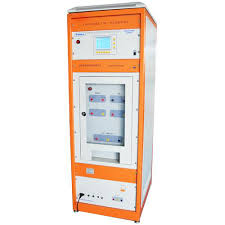Introduction
In the world of electrical engineering and product testing, surge generators play a critical role in assessing the robustness and durability of electronic devices against power surges and transient voltage spikes. Power surges, often caused by lightning strikes, switching of electrical loads, or malfunctioning equipment, can severely damage sensitive electronics, leading to costly repairs, failures, or even safety hazards. Surge generators are used to simulate these electrical disturbances, enabling manufacturers to test the resilience of their products before they hit the market.
This blog provides a comprehensive overview of surge generators, explaining their purpose, applications, key features, and the benefits they offer in ensuring the safety and reliability of electronic systems.
What is a Surge Generator?
A surge generator, also known as a transient generator or surge tester, is an electrical testing device used to simulate overvoltage transients or power surges that may occur in electrical circuits. These devices generate controlled and repeatable high-voltage spikes, mimicking real-world conditions such as lightning strikes or switching surges in electrical systems.
Surge generators are essential tools for testing the protection mechanisms of electrical components, systems, and devices, ensuring they can withstand these spikes without malfunctioning or sustaining damage. Commonly used in compliance testing and product development, surge generators are vital for industries such as telecommunications, automotive, aerospace, and consumer electronics.
Key Features of Surge Generators
Surge generators are sophisticated devices that come with a range of features to ensure accurate and consistent testing. Some key features include:
1. High-Voltage Pulse Generation:- Surge generators are capable of producing high-voltage pulses, ranging from a few hundred volts to several kilovolts, depending on the specific requirements of the test.
2. Multiple Test Waveforms:- These devices can generate various surge waveforms, including 1.2/50 µs (open circuit voltage) and 8/20 µs (short circuit current) waveforms, which simulate different types of electrical disturbances.
3. Programmable Pulse Settings:- Surge generators offer programmable options for controlling the amplitude, duration, and frequency of the surge pulses. This ensures the ability to customize tests for different product specifications and standards.
4. Automatic Test Sequences:- Many surge generators are equipped with software that allows for the automation of test sequences, ensuring that tests are performed consistently and efficiently.
5. Safety Features:- Surge generators come with built-in safety mechanisms such as overcurrent protection, insulation barriers, and emergency stop functions to ensure the safety of users during high-voltage testing.
6. Data Logging and Reporting:- Modern surge generators often feature data logging capabilities, allowing users to record test results and generate detailed reports for analysis and documentation.
7. Compliance with International Standards:- Surge generators are designed to meet international testing standards, including IEC 61000-4-5 for surge immunity testing, ensuring that products can be certified for global markets.
Benefits of Using Surge Generators
Using surge generators offers several key benefits for manufacturers and engineers involved in product development and testing. Here’s how these devices enhance reliability, safety, and performance:
1. Ensures Product Reliability:- Surge generators help manufacturers ensure that their products can withstand voltage spikes and transients without experiencing failures or damage. By conducting tests in a controlled environment, companies can guarantee that their products are reliable under real-world conditions.
2. Protects Against Electrical Failures:- Testing with surge generators can help identify weaknesses in the design of electronic circuits and components, enabling engineers to improve surge protection mechanisms and reduce the risk of electrical failures.
3. Compliance with Safety Standards:- Many industries require products to meet specific surge immunity standards, such as IEC 61000-4-5. Surge generators allow manufacturers to perform the necessary tests to ensure their products comply with these standards, helping them avoid regulatory issues and costly recalls.
4. Reduces Downtime and Maintenance Costs:- Products that have been thoroughly tested for surge protection are less likely to experience failures in the field, reducing downtime and maintenance costs for end-users.
5. Improves Product Design and Development:- Surge generators provide valuable data that can be used to refine product designs. By identifying how a product responds to surges, engineers can optimize surge protection features, ensuring that products are more resilient and better equipped to handle voltage spikes.
6. Prevents Data Loss and Corruption:- In applications where data integrity is critical (such as in computers, data centers, and communication systems), surge testing helps protect against data loss or corruption caused by electrical disturbances.
Applications of Surge Generators
Surge generators are used across a wide range of industries for testing various products and systems. Here are some common applications:
1. Telecommunications:- In telecommunications, surge generators are used to test the resilience of communication devices, such as modems, routers, and network infrastructure, against lightning-induced surges and power fluctuations.
2. Consumer Electronics:- Surge testing is critical for household electronics such as televisions, refrigerators, and personal computers to ensure they can withstand voltage spikes that may occur during storms or power surges.
3. Automotive:- Automotive manufacturers use surge generators to test the electrical systems of vehicles, ensuring that onboard electronics and safety systems are protected from surges caused by alternator loads or external power sources.
4. Aerospace:- In the aerospace industry, where reliability and safety are paramount, surge generators test avionics systems, control electronics, and communication equipment to ensure they can withstand transient overvoltage events.
5. Medical Devices:- Medical equipment such as imaging devices, monitors, and diagnostic tools must undergo surge testing to ensure they are immune to power surges, preventing failures that could jeopardize patient care.
6. Industrial Equipment:- Surge generators are used to test the electrical systems in factories, power plants, and other industrial environments to ensure the equipment can handle power surges and remain operational during transient disturbances.
Types of Surge Generators
There are several types of surge generators, each designed for specific testing needs:
1. Combination Wave Surge Generators:- These generators produce a combination of voltage and current waveforms, typically used for testing against lightning-induced surges or switching surges in power systems.
2. Ring Wave Generators:- Ring wave surge generators simulate transients caused by switching operations in power lines. These are commonly used for testing low-voltage electronic devices and appliances.
3. Power Frequency Test Generators:- These devices simulate overvoltages at power line frequencies (50/60 Hz) to test the insulation and surge protection capabilities of electrical components used in power distribution systems.
4. Impulse Voltage Generators:- Impulse voltage surge generators produce high-voltage pulses with steep rise times and are used for testing high-voltage equipment like transformers, insulators, and switchgear.
Surge Generators and International Standards
Surge immunity testing is often required to meet regulatory and safety standards set by international organizations. The most widely recognized standard is IEC 61000-4-5, which specifies surge immunity testing procedures for electrical and electronic equipment. Surge generators designed to meet this standard are critical for ensuring that products can be sold in global markets, particularly in regions with strict regulatory requirements like Europe and North America.
Additionally, many other industry-specific standards, such as MIL-STD-461 (for military equipment) or ISO 7637 (for automotive applications), require surge testing, making surge generators indispensable for compliance testing across various sectors.
Conclusion
Surge generators are essential tools for electrical testing, providing manufacturers and engineers with the means to simulate real-world voltage transients and ensure that products are designed to withstand power surges. By offering precise control over surge parameters and generating repeatable test conditions, surge generators help businesses reduce product failures, improve safety, and comply with regulatory standards.
From consumer electronics to industrial systems and medical devices, surge generators are key to ensuring that modern electronic products are robust, reliable, and safe to use in environments subject to electrical disturbances. As industries continue to evolve, the importance of surge testing and the role of surge generators will only grow, helping to drive innovation and ensure the highest quality standards for the next generation of technology.


